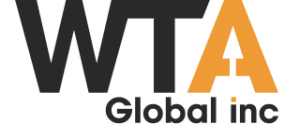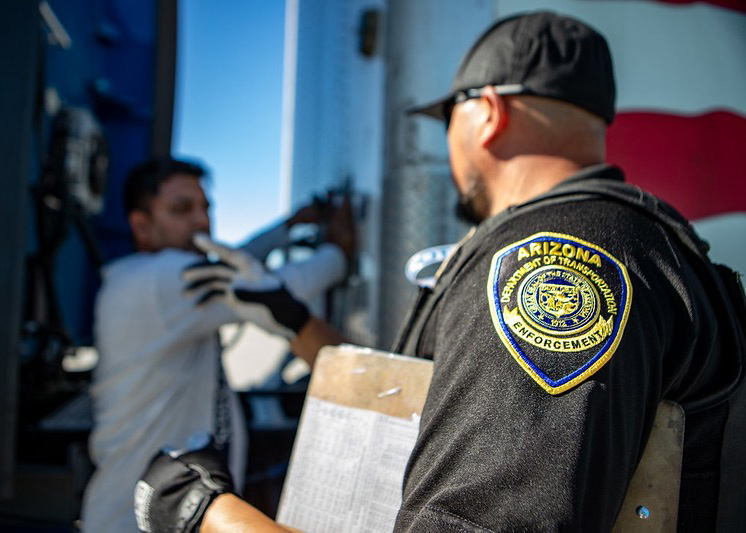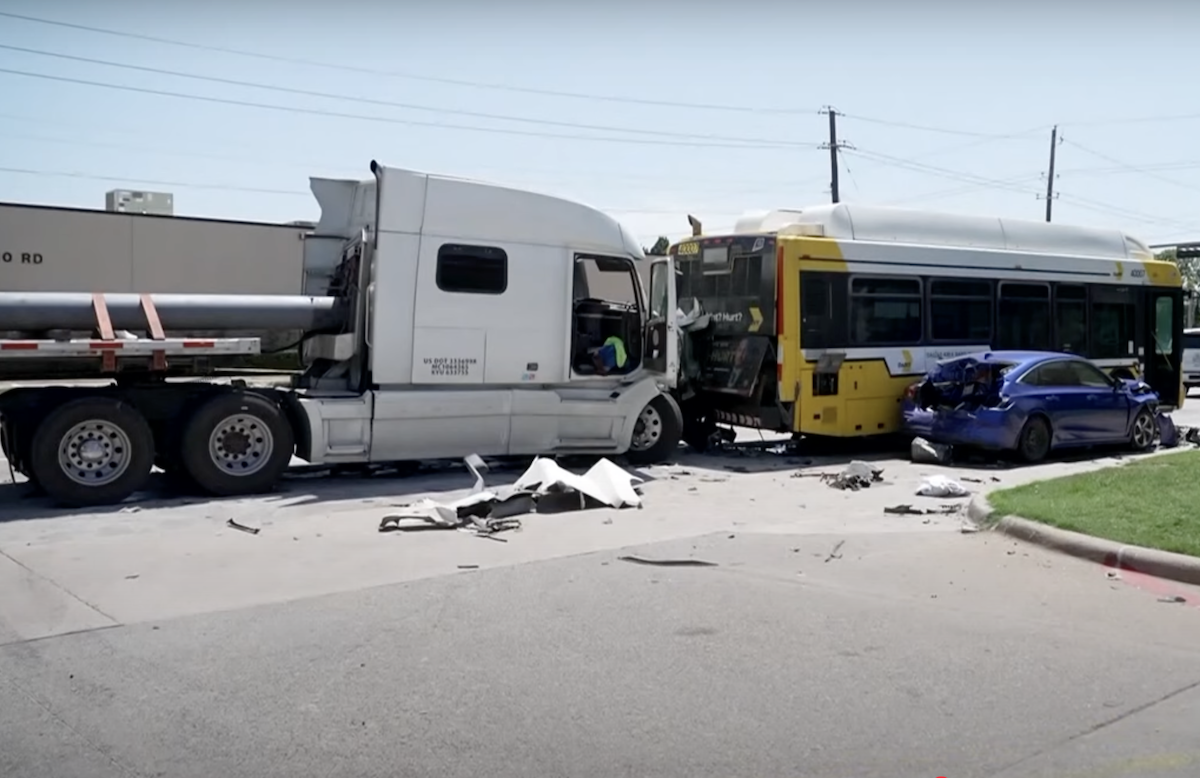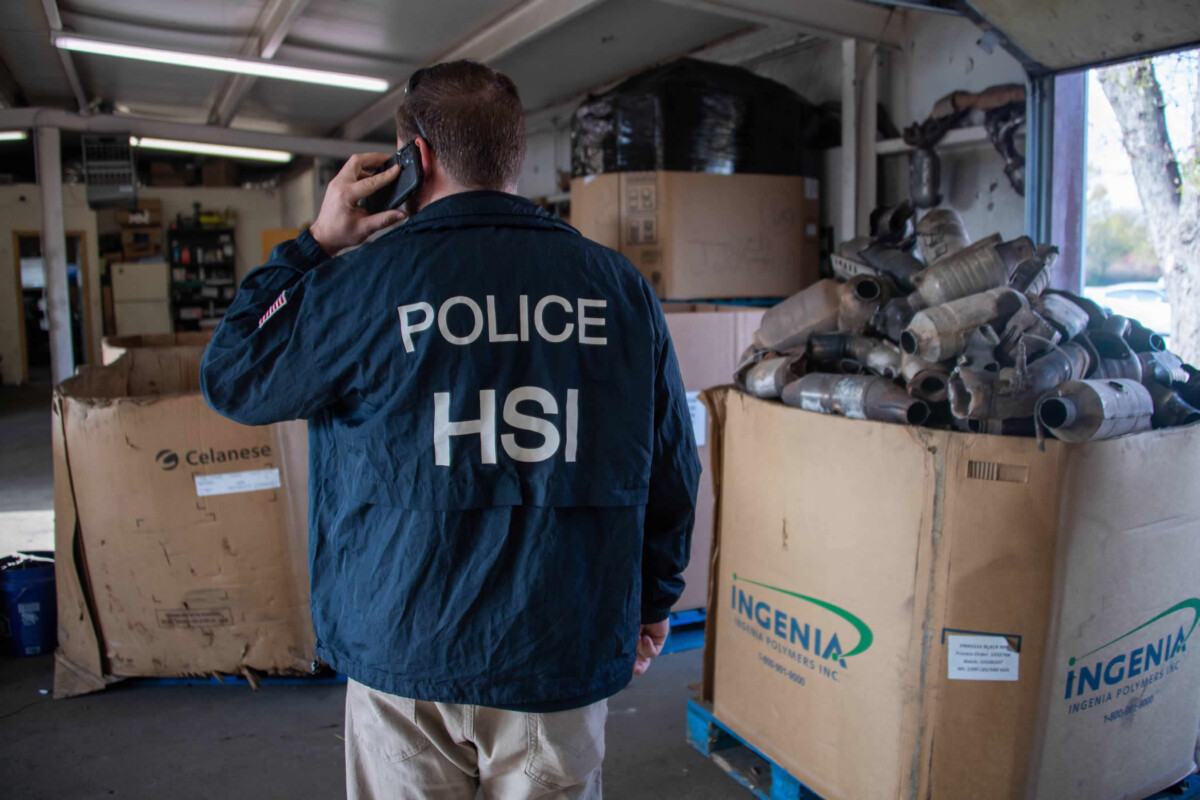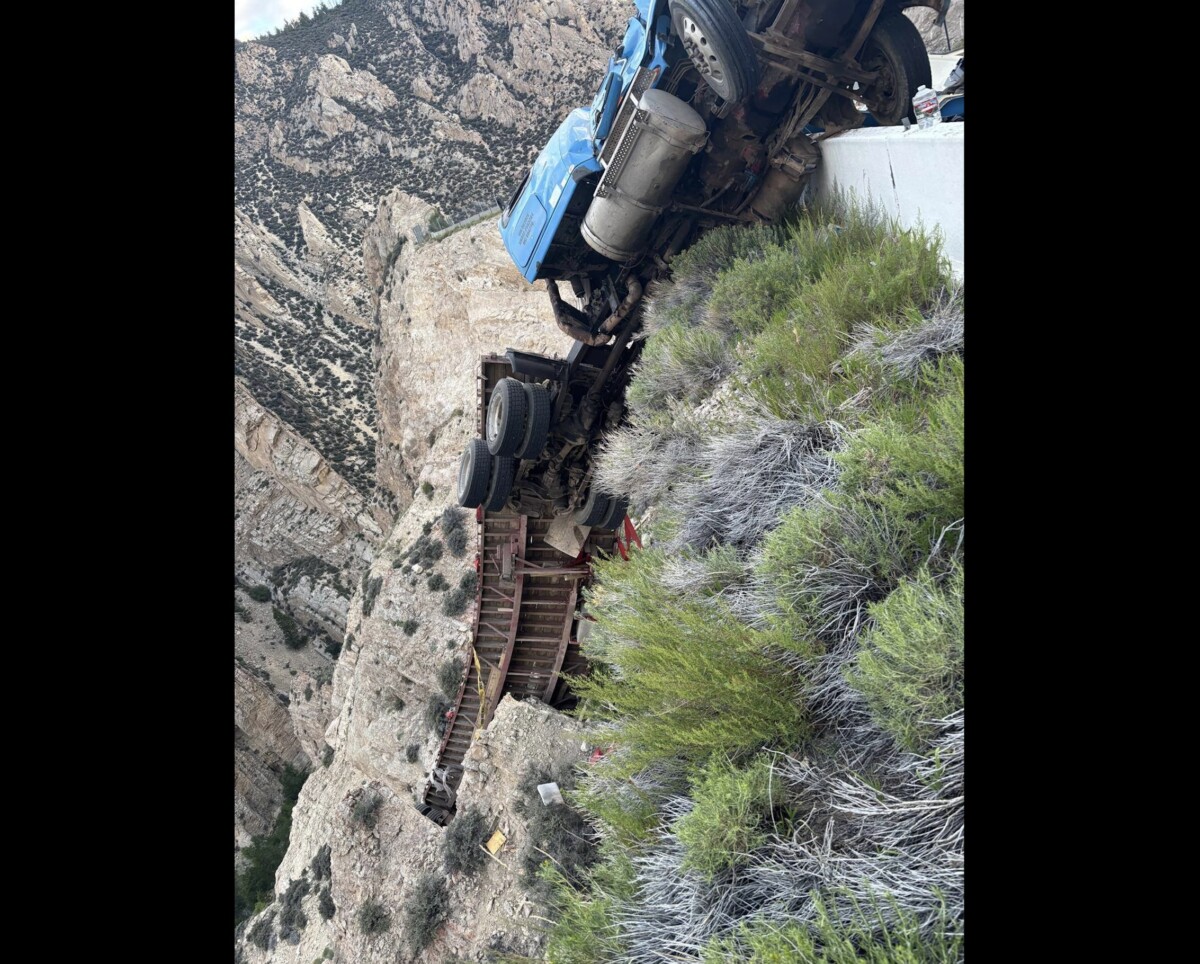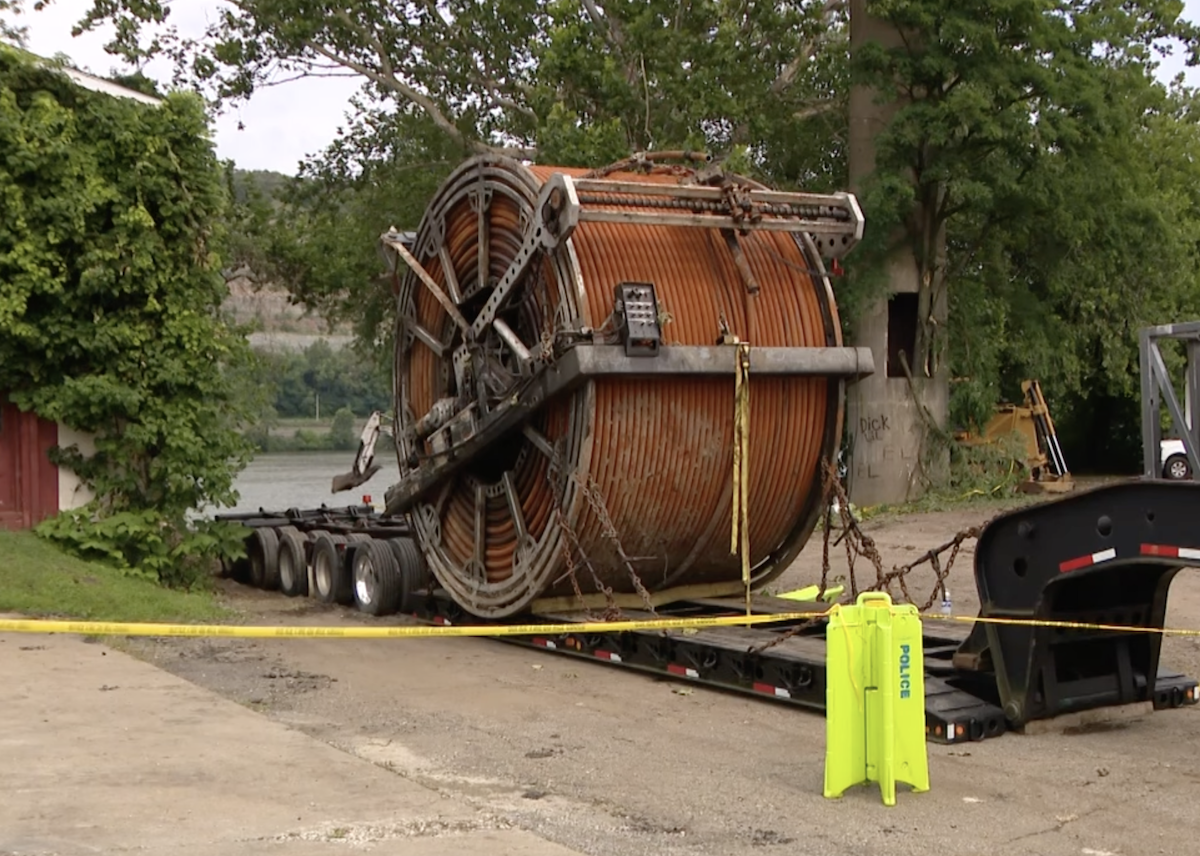Law enforcement agencies throughout North America are gearing up for the Commercial Vehicle Safety Alliance’s (CVSA) International Roadcheck inspection effort.
The Roadcheck inspection effort is scheduled for May 13 — 15, 2025, throughout the U.S., Canada and Mexico.
According to the CVSA, Roadcheck is “the largest targeted enforcement program on commercial motor vehicles in the world, with nearly 15 trucks and motorcoaches inspected, on average, every minute across North America during a 72-hour period.”
During Roadcheck 2024, officers conducted a total of 48,761 inspections during the 72 hour blitz.
This year, inspectors will be paying special attention to two areas of emphasis during Roadcheck — tires and false records of duty status.

What Happens During The Driver Portion of the Roadcheck Inspection?
See below for the what the CVSA tells truckers to expect during the driver-focused part of the Roadcheck inspection.
- The inspector will check the condition of the seat belt and ensure the driver is wearing their seat belt properly and it’s fastened. Note: Everyone in the commercial motor vehicle, including passengers and co-drivers, must be wearing a fastened seat beat.
- The driver’s overall condition will be observed for illness, fatigue or other signs of impairment.
- The inspector will look for any unauthorized passengers.
- The inspector will check for the illegal presence of alcohol, drugs or other contraband.
- Inspectors will check the driver’s medical examiner’s certificate and skill performance evaluation certificate (if applicable) and verify their validity. The inspector will also check for corrective lens, hearing aids and any other physical limitations indicated on the driver’s license.
- Drivers should have their record of duty status and supporting documents ready. If the driver has an electronic logging device, they must be knowledgeable in its use and able to perform the tasks asked by the inspector. The driver is required to transmit the records upon request. The inspector will verify the driver’s hours of service and check the accuracy of the record.
- If the driver is utilizing an exemption, the driver should indicate that to the inspector. The inspector will ensure the driver meets all criteria for the exemption(s). To avoid delays, it is recommended that drivers print any exemptions they are utilizing and provide them to the inspector.
- The inspector will collect the driver’s license or commercial driver’s license (CDL), and check the expiration date, class, endorsements, restrictions and status. The inspector will also query the license for any suspensions, cancellations or disqualifications. Note: If a commercial motor vehicle is being operated by a commercial learner’s permit holder accompanied by the holder of a valid CDL (see Code of Federal Regulations 383.25), the CDL holder must have their CDL available and be fully qualified to operate the vehicle.
- U.S. Only – The inspector will query the Federal Motor Carrier Safety Administration’s Drug and Alcohol Clearinghouse to ensure the driver is not prohibited.
What Will Inspectors Check During the Vehicle Portion of the Roadcheck Inspection?
See below for an overview from the CVSA on what inspectors will be looking for during the vehicle part of the inspection.
BRAKES
Check for missing, non-functioning, loose, contaminated or cracked parts. Check for S-cam flipover. Listen for audible air leaks around brake components and lines. Check that slack adjusters are the same length (from center of S-cam to center of clevis pin) and the air chambers on each axle are the same size. Ensure the air system maintains air pressure between 90- 100 psi (620-690 kPa). Inspect for non-manufactured holes (e.g., rust holes, holes created by rubbing or friction, etc.) and broken springs in the spring brake housing section of the parking brake. Measure pushrod travel. Inspect required brake system warning devices, such as anti-lock braking system (ABS) malfunction lamp(s) and low air-pressure warning devices. Inspect the tractor protection system, including the bleedback system on the trailer. Ensure the breakaway system is operable on the trailer.
COUPLING DEVICES
On trailers/converter dolly(s), check safety devices (chains/wire rope) for insufficient strength, missing components, improper repairs and devices that are incapable of secure attachment. On the lower fifth wheel, check for unsecured mounting to the frame, missing or damaged parts, or any visible space between the upper and lower fifth-wheel plates. Verify the locking jaws are around the shank, not the head. Ensure the kingpin and release lever are seated properly and the safety latch is engaged. Check the upper fifth wheel for damage to the weight-bearing plate (and its supports), such as cracks, or loose or missing bolts on the trailer. On the sliding fifth wheel, check for proper engagement of locking mechanism (teeth fully engaged on rail), and check for worn or missing parts. Ensure the position does not allow the tractor frame rails to contact the landing gear during turns. Check for damaged or missing fore and aft stops.
FUEL AND EXHAUST SYSTEMS
Check your fuel tanks for loose mounting, leaks, and loose or missing caps. For exhaust systems, check for unsecured mounting, leaks beneath the cab, and excessive carbon deposits around seams and clamps. Make sure exhaust system components are not in contact with electrical wiring, brake lines or hoses.
FRAME, VAN AND OPEN-TOP TRAILERS
Inspect for corrosion fatigue, cracks in the frame, missing or defective parts, and cracked, loose or missing crossmembers. Look at the condition of the hoses and check the suspension of air hoses on vehicles with sliding tandems. On the frame and frame assembly, check for cracks, bends, sagging, corrosion, fatigue, cracked or missing crossmembers, cracks in the frame, loose fasteners, missing or defective parts, or any defect that may lead to the collapse of the frame. Inspect all axle(s). For vans and open-top trailer bodies, look at the upper rail and check roof bows and side posts for buckling, cracks or ineffective fasteners. On the lower rail, check for breaks accompanied by a sagging floor, rail or cross members, or loose or missing fasteners at the side post adjacent to the break.
LIGHTING
Inspect all required lamps for proper color, operation, mounting and visibility.
SECUREMENT OF CARGO
Check tail board security. Verify end gates are secured in stake pockets. Check both sides of the trailer to ensure cargo is protected from shifting or falling. Verify rear doors are securely closed. Where load is visible, check for proper blocking and bracing. It may be necessary to examine inside the trailer to ensure large objects are properly secured. Check cargo securement devices for proper number, size and condition. Check tiedown anchor points for deformation and cracking.
STEERING
Ensure the steering wheel is secured and telescoping, and tilt functions lock into place. Check for welds or cracks on steering components. Check all components for unsecure mounting, loose fasteners and excessive movement. Check the steering lash by turning the steering wheel in one direction until the tires begin to pivot. Then, place a mark on the steering wheel at a fixed reference point and turn the wheel in the opposite direction until the tires start to move again. Mark the steering wheel at the same fixed reference point and measure the distance between the two marks. The amount of allowable lash varies with the diameter of the steering wheel.
SUSPENSION
Inspect the suspension for indications of misaligned, shifted, cracked or missing springs, loose shackles, missing bolts, unsecured spring hangers, and cracked or loose U-bolts. Check any unsecured axle positioning parts and look for signs of axle misalignment. On the front axle, check for cracks, welds and obvious misalignment.
TIRES, WHEELS, RIMS AND HUBS
Check tires for insufficient inflation, cuts and bulges, regrooved tires on steering axle, tread wear and major tread groove depth. Inspect sidewalls for improper repairs, exposed fabric or cord, contact with any part of the vehicle, and tire markings excluding it from use on a steering axle. Inspect wheels and rims for cracks, unseated locking rings, and broken or missing lugs, studs or clamps. Check rims for cracks or bends, loose or damaged lug nuts, elongated stud holes, cracks across spokes or in the web area, and evidence of slippage in the clamp areas. Check the hubs for lubricant leaks, missing caps or plugs, misalignment or improper positioning, and damaged, worn or missing parts.
